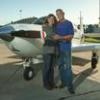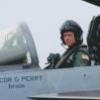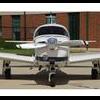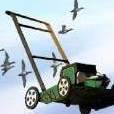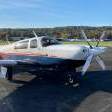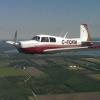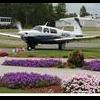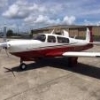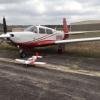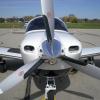Leaderboard
Popular Content
Showing content with the highest reputation on 06/30/2015 in all areas
-
As I sit here with 50+ years of flying (Wright Bros Award), 7 jet type ratings and 20,000+ hrs, reading Mr Perry's article, it seems he hits the nail on the head with something I have also been preaching for a long time. Just because I have a license that says I can don't mean its the smartest decision. I have been known (in my way younger days) to depart in my Cessna 140 with venturi driven gyros into zero/zero conditions on a regular basis. I've done all the 600 RVR Autolands in blowing snow while flying 727s, 757s and A320s that I ever want to do. In the not to distant past I would do 1000 RVR takeoffs in an MU-2 but no more. Now that I'm retired and flying 1/10th the amount I did and 1/100th the amount of IMC, I am rapidly turning into a day VFR type. Could I still hack a 200/ 1/2? Sure! Could I depart with a 100 foot ceiling and be OK, sure but I don't want to anymore. It's just not worth the risk to me any more. Too many "what ifs". There is an old says that goes like this- "You can only rub the fur of a cat backwrds for so long until the cat takes exception!" I've been rubbung the fur backwards for a long, long time.8 points
-
4 points
-
My thinking is insensitive regarding the post title and it's message. I do not feel frustration. I feel sadness at the loss of three lives and the upheaval of those in their castle, only to have it come burning down around them. Just a sad day. Machines break. Makes me think how important maintenance, pre-flight, planning for contingencies and staying within personal minimums. My thoughts and prayers are with the families of those lost and others impacted by the accident.4 points
-
Unfortunately you will have to either violate that policy or trade in your Ovation for a twin.3 points
-
Peter, I agree...and that's why AOPA's Air Safety Institute works hard every day making over 300 safety education products free and available to all pilots, not just AOPA members. The goal is to help give pilots the knowledge necessary to avoid common pitfalls and make flying as safe as it can be. General Aviation (not just mooney pilots) is a small community and getting smaller each year. Those of us who love to fly have to set aside time to continue the learning process. One of the things that I emphasize at my Safety Seminars, is adopting the correct safety mindset. A general aviation plane is no place to take unnecessary risks. Setting and adhering to a set of personal minimums is the best way to leave an "out" when things go wrong. Here's a copy of an article that will soon be published in flight training magazine. Sharing information like this and a continual desire to learn is the best way to help one another avoid this kind of tragedy. Setting Your “Personal Minimums” as a Pilot By: George Perry AOPA Air Safety Institute We hear the term “Personal Minimums” tossed around quite a bit in general aviation flying, but what does it really mean? What criteria should a pilot use to set personal minimums and how do we “enforce” them when push comes to shove? Before we delve too far into that question, it’s important to set the stage with two other terms we hear frequently and really focus in on what each means. Currency and proficiency have similar definitions but they couldn’t be more different. Being current under the Federal Aviation Regulations means you can “legally” act as a pilot in command of an aircraft. Being proficient means you’re "fully competent." Another way to say this is Current = Legal and Proficient = Safe. Assuming this is true there are circumstances where adverse conditions exist and being current is not enough to guarantee safety. The FAA defines currency through the Federal Aviation Regulations (FAR’s); we all know that. But who defines proficient? The short answer is – Nobody. That responsibility falls largely on the shoulders of the Pilot in Command (PIC) and it’s usually a judgment call. Another consideration is that each person’s definition of proficient may be different, along with their inherent abilities, background, and experience. So in the absence of firm guidance, it’s up to pilot to determine whether or not to go flying and what conditions are acceptable to avoid a situation that exceeds their skill level or the aircraft’s abilities. Voilà - Personal Minimums are what we’ve come up with to help guide that decision making process. That sounds great, but without much aviation experience, it’s hard for a pilot to set their own personal minimums because they just don’t have the requisite background to make an informed decision. That’s OK because it’s part of the learning process and flying should be a team sport. In this case, it makes sense to get a second opinion. Ask an experienced pilot or instructor to help with the Go/No-Go decision. When pilots start to think about setting personal minimums they usually start with weather conditions. VFR / IFR qualifications come into play but an IFR ticket shouldn’t be thought of as a free pass. A pilot might be current and proficient to fly in low overcast and shoot approaches down to 200 ½. However personal minimums should also consider safety margins when things don’t go as planned. What if the engine were to quit in those conditions? The pilot would be “blind” until gliding down to 200 feet and at that altitude there’s little time to find a “soft” spot to land. It’s important to think about personal minimums as more than just a “weather based” decision. There are lots of factors to consider. Cross winds, runway lengths, fuel reserves, night flying, aircraft performance, how much rest the pilot’s had, etc. All of these factors are important to ensure an acceptable level of safety. Personal minimums are your minimums, tailored to your experience, strengths, and weaknesses as well as your level of proficiency. One way to formalize personal minimums and decisions around whether or not to go flying is to simply write them down. Create a personal “Standard Operating Procedures” for yourself or your group. If you are part of a group, flight school, or fly with partners, it makes a lot of sense to write down group specific personal minimums that everyone can agree to. When written in black and white the decision process is more formal and will be more likely to be adhered to. Even if you own an aircraft outright, it makes sense to write down your basic Go/No-Go criteria so in the heat of the moment, you can reference thoughts made earlier without the pressures associated with Get-Home-Itis. Once personal minimums are set, some requirements may remain on the list forever, while others may change or be eliminated as skills grow. Periodically review the criteria and make changes as you gain experience and comfort flying in varying conditions. Lastly, personal minimums aren't just for beginners. Every pilot regardless of experience, every flight club and every organization that flies airplanes, should have standard operating procedures that specify personal minimums. The best kind of accident is the one that was avoided. Set and use personal minimums because they are proven to help pilots make smart decisions before ever leaving the ground. About the Author George Perry is Senior Vice President of AOPA’s Air Safety Institute. He has been active as a general aviation pilot since the age of 16, and recently culminated a 20+ year career in the Navy as an F-18E squadron commander. In addition to being an F-14 and F-18 instructor pilot, he has over 850 carrier-arrested landings, holds ATP, CFII, and MEI certificates, and has logged over 5000 flying hours.3 points
-
Also if anyone read the news article and saw the pics , it took three hours from the impact , until it was extinguished , I think there was considerable fuel on board.....Just sayin...3 points
-
This thread reminds of Radar O'Reilly from MASH and his efforts to send a Jeep home, one part at a time! Sent from my iPad using Tapatalk2 points
-
Carl: When you feel ready, sign up for a Caravan clinic. It will make your first time to Oshkosh something other than absolute gripping fear - watching sixty aircraft bimble their way through the Fisk arrival with you hoping that the ones closest to you actually see you as you enter whatever pattern the pink shirted crew have assigned you praying that none of them are trying to put theirs down on the same dot as you. In the Caravan, you will get to fly with 35 or so of your newest bestest friends, all going in the exact same direction and with a demonstrated level of skill in getting there proven to avoid bumping into anyone else in the doing of it. And the photo is cool too!2 points
-
My worst was when my mechanic called me saying, " are you sitting down?" I did and things only got worse from there, oh well. I really hate, " we found metal in the filter, fly another 10 hours and we will check it again. " that has never worked out. It has always turned out that the worst possible outcome became THE outcome. Never a problem money can't fix as long as it's on the ground. But I keep at it because it's worth it, I think.2 points
-
A couple of long XCs may make you want the IR even more... Easier to spend the AMUs when you want to... Best regards, -a-2 points
-
2 points
-
That engine though is a new design and so Yamaha has to factor in the cost of the tooling, R&D, marketing, etc. A Lycoming IO-360 doesn't have those issues, to me why they cost over $20K is beyond me as Lycoming should be easily able to mass produce these.2 points
-
+1 When I was younger, and needed "hours", I flew any airplane anywhere in any weather, day or night. Now that I am older, not so much any more. Hmmm... some old grey headed pilots told me this would happen to me some day. When I was 25, I didn't believe them. Looks like they were right!2 points
-
2 points
-
I flew my IO360 to 2,445 hours in my '83 Beech Sierra and at annual my IA found that an exhaust valve guide had worn beyond limits so I got an overhaul. It was a first run engine and I flew the plane five days a week on average. I live on an island surrounded with salt water. I stored the plane outdoors. In winter there was so much moisture in the engine that I often pulled up oily blobs of ice on the dip stick. I usually flew fifteen minutes in the morning and the same thing each evening to commute to work off-island. I changed the oil and filter at 40 to 45 hours and used AeroShell 15W50. I always cruised at 75% power. It's a total sample of just 1 airplane, but I have to believe the longevity resulted from frequent use.2 points
-
When I wrote about thinking of safer routes and not flying over widespread low IMC in another thread.....(the one about flying over the everglades) I got jumped on from all directions about how ridiculous I was. Also about installing 406 ELT's in how much of a waste of money it was.... What changed between now and 6 months ago? I really would like to know...... where are all the pilots that say flying around with widespread low IMC is safe in a single engine now? Think about what you are doing.....this is not a multi engine turbine with all weather capability and triple redundancy in systems....Just because your ovation or b36 is several hundred thousand dollars does not change the fact that you are flying a lawn mower with wings..... A cirrus parachute would have been great in this situation but I would not even have planned to put myself in those weather conditions with a cirrus.....1 point
-
I am with you, as my recent similar experience will testify. Gittin' 'er done while on the ground is way better than trying to solve the problem at 3000' in IMC over suburbia. And we made the decision that it is worth the expense. My wife says flying is part of my smile.1 point
-
Ouch. That hit close to home. I landed at KDXR (Danbury, CT) about 15 min before he crashed and learned a bunch of things that day, and a few more reading this thread (I’m a 250hr inexperienced IFR rated PPL who told himself his personal minimum for now is MVFR). For those of you from out of the region: an occluded front straddled the Northeast over the weekend. It moved first slower and then faster than predicted (to the Northeast) and then slowed again. Every conceivable sigmet was active: LL Turb, LL Windshear, LIFR, Icing, etc. I was scheduled to visit a friend in Holland, Michigan. I planned Saturday-Sunday, then changed it to Friday-Saturday to beat the system’s arrival. It then sped up and on Saturday it completely covered my route over NY and PA. I told my friend he was stuck with me another day and left Sunday at 2pm figuring I’d be following the tail end of the system as it moved out. When I left the entire Northeast was IFR or Low IFR. My destination was below minimums but area airports with TAFs predicted above minimums weather by 5pm so I left anyway. The system must have slowed down again because when I got there the NY region was at minimums everywhere and I assume was even nastier near Boston as it would have had more of the weather that makes an occluded front so dangerous. So I started looking at diverting. Ironically I briefly considered Lancaster but settled on Wilkes Barrie and Allentown as the best options, well behind the front and showing above minimum ceilings. In the end I decided to have a look as I figured that with several more hours of fuel on board (gotta love 100 gal tanks) I had the option to go to DXR and then fly 1 hr south to better weather. I flew the Loc 8 approach to minimums and made it in, but if I had had engine problems I would have been in the same boat. Next time I think I’d better impose on my friend and stay another day, or go find out what Allentown or Wilkes-Barrie look like on a cloudy day.1 point
-
David, all you have to do is to get in your plane Sunday morning at around 11 AM and taxi westbound... this is when the caravan shall arrive and you will be parked near us for sure. Marshallers will have no clue you were not just arriving. Yves1 point
-
1 point
-
First for the Navy and shortly thereafter for the Air Force. We got an internal nose gun, finally, with the F-4E. Through the 50's and most of the 60's old bomber (SAC) generals were running the Air Force. They never grasped tactical air combat and viewed fighters as only a tool to protect their bombers. So they eliminated our dog fighting guns and training in favor of stand off missiles. A big mistake that cost too many good men attempting to dog fight with missiles not designed or suited for close in tactical fighting. IMNSHO Curtiss LeMay did the USA no favor.1 point
-
I'm curious as to why one would want to go to 15000 traveling N/S east of the Rockies in a NA plane. In over 3000 hours I can count on one hand the times I went above 11000 and that would have been to grab some winter tail wind from Chicago to NC. Perhaps with a Rajay...1 point
-
Dumb, dumber, dumbest.... The passengers are suing, the model is suing (FOR SEXUAL HARASSMENT ), and the former pilots are in truck driving school.1 point
-
Well, there's no way she could've stalled the airplane. Couldn't get the yoke back far enough.1 point
-
JWN is perfect for downtown access but it's closed for another month or 2. Lengthening the runway. MQY is a nice airport and maybe 25 minutes to downtown, fuel is reasonable, cars to rent, not sure about ramp space right now due to JWN closing and planes relocating to MQY. I'd call the FBO there first. M54 is about 25-30 minutes to downtown, but may be harder to find a rental car??? Not sure. Plenty of ramp space. Gas is slightly cheaper than MQY. MBT is a good option about 35 minutes to downtown. Gas is about 40 cents cheaper than MQY. Plenty of ramp space. Not sure about rental cars. Can be very busy with MTSU flight school. Looks like a beehive on radar scope at work. BNA is 10 minutes to downtown at most. Gas is nearing $8 a gallon. Plenty of ramp space and rental cars. Having said all that, I'd park at either MBT or M54. Uber or cab to downtown. If I'm available, I'll pick you up from airport and drop you off downtown if you show me your plane.... If you need any suggestions for food, I can help with that. Lots of good food in Nashville.1 point
-
retards. "hey, let's violate company policy and do something really stupid and potentially dangerous. Also, let's make sure to take pics of us doing it!"1 point
-
aoo thats my home base . i like to.fly to.clarion to.get.fuel. but.if i knew you were.around i would have bought you lunch . carl1 point
-
Post date it for Thursday, well arrange the pick up next week. I'm off on Friday.1 point
-
The Narco has become the victim of demonic possession and no matter which priest I have brought to the hangar to perform an exorcism, I keep hearing it say "And your GTN is in here with us". The Narco has a troubling problem. It just goes offline periodically. The display lights stay on but the unit isn't receiving. I haven't able to confirm if the transmitter has quit as well. As for the BK, based on what you and I saw at the avionics shop, they would have needed to made some major enhancements to make me like that GUI. The Avidyne has a potential, but the price point is pretty high. Sent from my iPad using Tapatalk1 point
-
1 point
-
I attended Air Force Fighter Weapons School back in the '70's, and I assure you there was very little reality in the Top Gun portrayal of training. 'Maverick' would have wound up a supply officer in Diego Garcia, at best, for pulling any of those those shenanigans. Actually his characterization was of a self obsessed loser. Also consider that F-4 stick and rudder flying back then was much less computer dependent than these days, and there was a lot less micro management from the ground to the cockpit. The good ol' days. Still some great flying sequels and a wonderful soundtrack in that movie. Good luck with any Top Gun II.1 point
-
yep, no core credit for you on a new or reman. Robert, just have a great shop rebuild it to new specs, and avoid possibly getting the bonus factory surprise in a couple hundred hours1 point
-
HIWAS recordings, better local Flight Service Centers that you could actually call up from the air, interactions with ATC, StormScopes...all the stuff you no doubt learned about in your PPL training. But I have to agree that with the advantage of cockpit weather it does take some of the risk out of it. But I've also known a few (and read about more) thrill seekers that tried to use this advanced technology to their detriment...it's a warm security blanket that can overheat and burn you if you get too complacent. Congrats on the great trip, though. You will learn more about flying by doing a few of those than by hanging out in the local area.1 point
-
"Emergency Landing" instead of the usual !!!SMALL PLANE CRASH!!! pant, pant. Give that headline writer a gold star.1 point
-
Those blue Flourosilicone O-rings last at least 5 years and likely 10-15 years. Sure they cost a few bucks more, but they dont get cracks and get hard like the plain rubber O-rings get. they simply dont wear out. My bladder caps have them standard, and they're the 50 PSI learjet / citation / king air fuel caps. http://www.csobeech.com/fuel-caps.html1 point
-
1 point
-
On the ground your speed is controlled by state speed limits. In the air, your speed is controlled only by your wallet. The more money you have, the faster you can go. Ie. M20J, M20R, Acclaim,.Aerostar 601P and so it goes.1 point
-
It can take 5 or 6 hours for suspended water to filter out in JET fuel tanks but avgas is lots faster More like the 10 to 15 mins. I do both orings on each cap every year without fail.1 point
-
In my experience I've seen line guys attempt to bash the fuel cap tab down with the heel of their hand because the cap is cocked. One guy in FXE couldn't get it with his hand so he started to use his flashlight. Anymore it's like towing. Absolutely not unless I'm present.1 point
-
1 point
-
Sounds like both a learning experience and fun. Glad for you Dev! Back before all this inflight weather availability, FlightWatch was on my COM's speed dial ATC radar was still evolving and although they could show some weather, it isn't like what they have available today. Even flying IFR, being in a single engine plane, I am a lot more conservative than my early IFR days. You get the crap scared out of you one time and you become a reformed aviator. I don't have a problem flying an approach to near minimums at my destination or crossing terrain for short periods of time with lower clouds but I am stacking as much as I can in my favor (like looking for at least 1000' enroute and higher if it is hilly). No more zero/zero at takeoff, "mountains obscured along your route" and the weather at your destination is flirting with below mins for me. What was I thinking back then? Go get that instrument rating and it will open up doors for you and keep a few still slightly or completely closed (like icing, TStorms). This picture shows the fun and value of the instrument rating:1 point
-
Jerry, that's an interesting adaptation of a shotgun panel. Looks very functional. Tommy, I'm not a "glass half full" or a "glass half empty" guy. As a mechanical engineer, I'd have to say that the glass is too large.1 point
-
I was in the market for a tug and found recent reviews on other forums discussing the problems various customers had with Minimax when their tugs didn't perform. There is a YouTube video review at www.youtube.com/watch?v=6OSBMS_D8_Y that shows the various problems. Based on what I've read, I'm now in the market for a used lawn tractor to convert to a tug. A $100-$200 used tractor sure beats any potential issues with Minimax's $1,400 tug.1 point
-
1 point
-
Great tool, but more often than not, I end up buying "guilt fuel".... That's when you buy fuel because you feel guilty landing, parking, using the bathroom and not buying any fuel.1 point
-
Dev - fly early morning. If you haven't figured out skew-ts, spend some time to learn them and the CAPE predictions. Good indicator of storm potential. The Lockheed Martin weather site has some great tools. I look at the Lifted Index / K Factor Index: The CCFP: In flight, if you don't have a StormScope, you certainly want to be careful getting yourself boxed in. ATC has better weather tools than 25 years ago, as does the fact that you can carry ADS-B In weather. My motto -- "when in doubt, wait it out" Sent from my iPad using Tapatalk1 point
-
Chris, As you may recall I had 3 GTN 750's changed out. My 650 has been solid as a rock since day one. 2 of the 3 750 had squelch breaks issues. I tried every update and the default Squelch threshold adjustment from Factory 0 to the highest setting which I don't recall what it was. We tried the Garmin suggested setting of 75, that did help but did not solve the issue. I got very angry with Garmin and had some very heated conversations with my avionics shop and Garmin directly. The first swap was a bit more than a challenge as I had to prove it was their unit... had all the coax replaced with the high$ special coax they say is required and all kinds of things I spent a small fortune on!!!! Then I finally videoed the event multiple times and took the Avionics shop on a ride to show him! He was always a supporter just to set the record straight. He then got with Garmin and after 2 more units I have not had a single issue with this 750. Never an issue with the 650. teejayevans is correct it can as I have seen 3 GTN give squelch breaks when a device is plugged into the cigarette lighter. I had the issue myself when using a cheap unit. Got one from Dominic that owns Mygoflight.com that I ran into at Oshkosh. By the way they participate as a sponsor and provide give always for the Caravan, but i digress! Bottom line some devices plugged in can and do cause some issues but never have with my GTN650.... Solid as a rock! I fully believe Garmin does know they have an issue, just wont talk about it or admit it. That is what irritated me most. I realize all companies have issues with products from time to time, I know the world of certified aircraft components are supposed to be as immune to those type of things as possible but issues do and will occur. That is tolerable to me, not admitting they have a problem is inexcusable to me! Wish you the best and hope you don't have to go through what I went through. PS Garmin was having issues with the weather and traffic being displayed on the G500, so in advance of the purchase I required and received in writing when I purchased that the unit would provide weather and traffic on the G500 and if it didnt for any reason Garmin would provide it to me at no charge when it came out. They agreed and when this last upgrade came along they honored the agreement! Even included the larger Supplemental Data SD card required to operate with the update.1 point
-
I have heard theories that they are carried upward by updrafts, rather than merely flying that high.1 point
-
We are just finishing up with the annual inspection, no major issues. This is the first time I have fully participated. I learned a lot and and saw parts of the Mooney I didn't know existed. My arms are sore, my bu** is sore and my fingernails will NEVER come clean. Some of the benefits in pictures.........1 point
-
Someone once told me to make sure I was introduced to the kids of the mechanic who would be working on my plane. If the kids already had braces, it was okay to work with him.1 point



